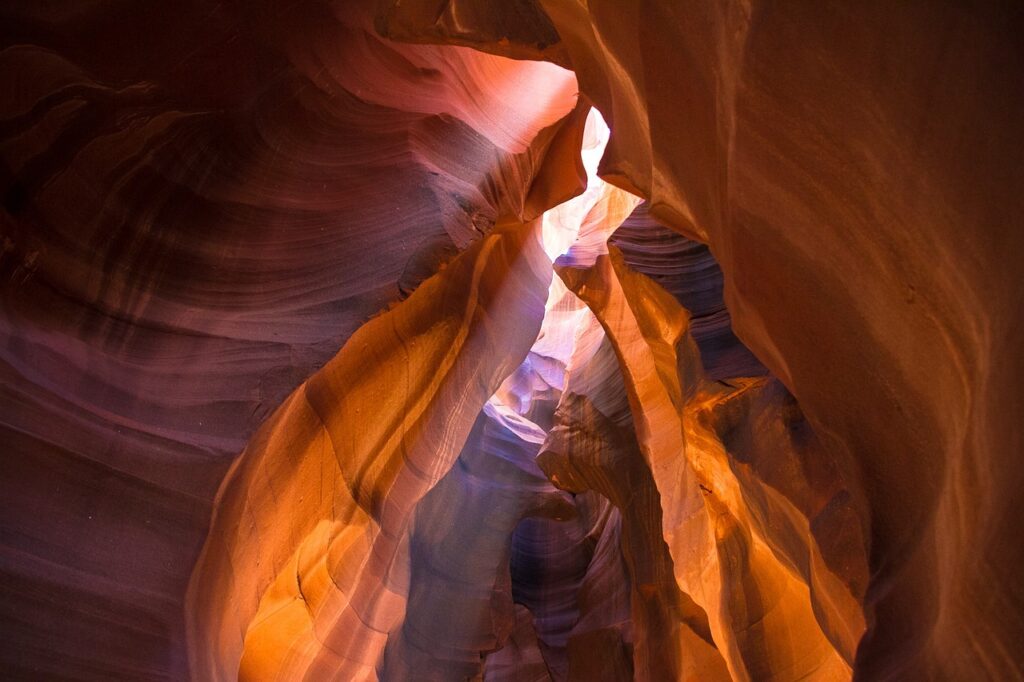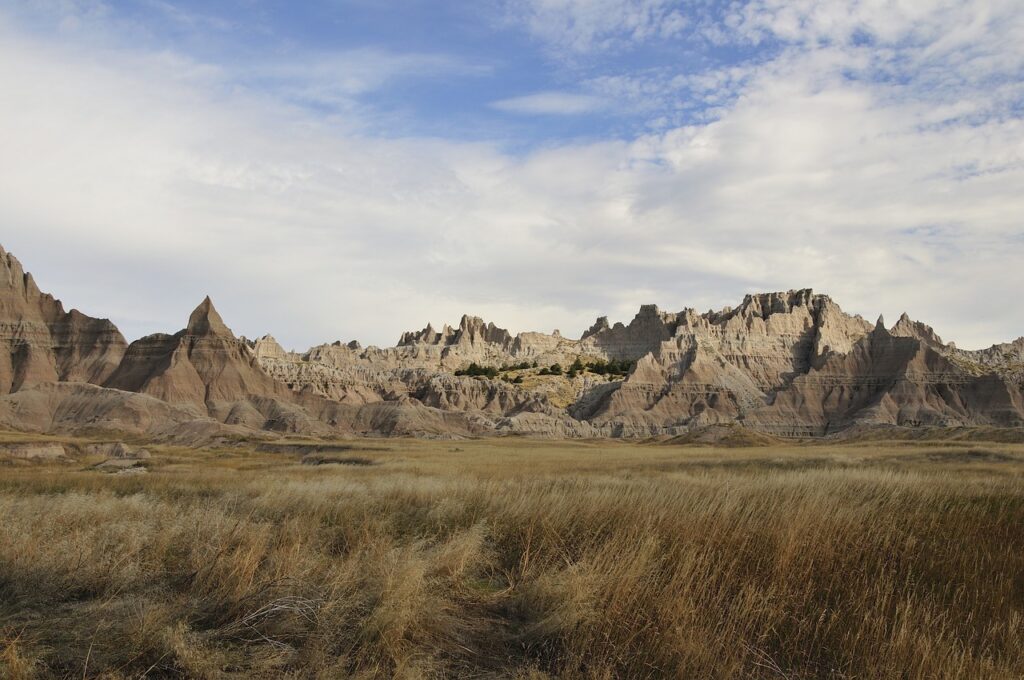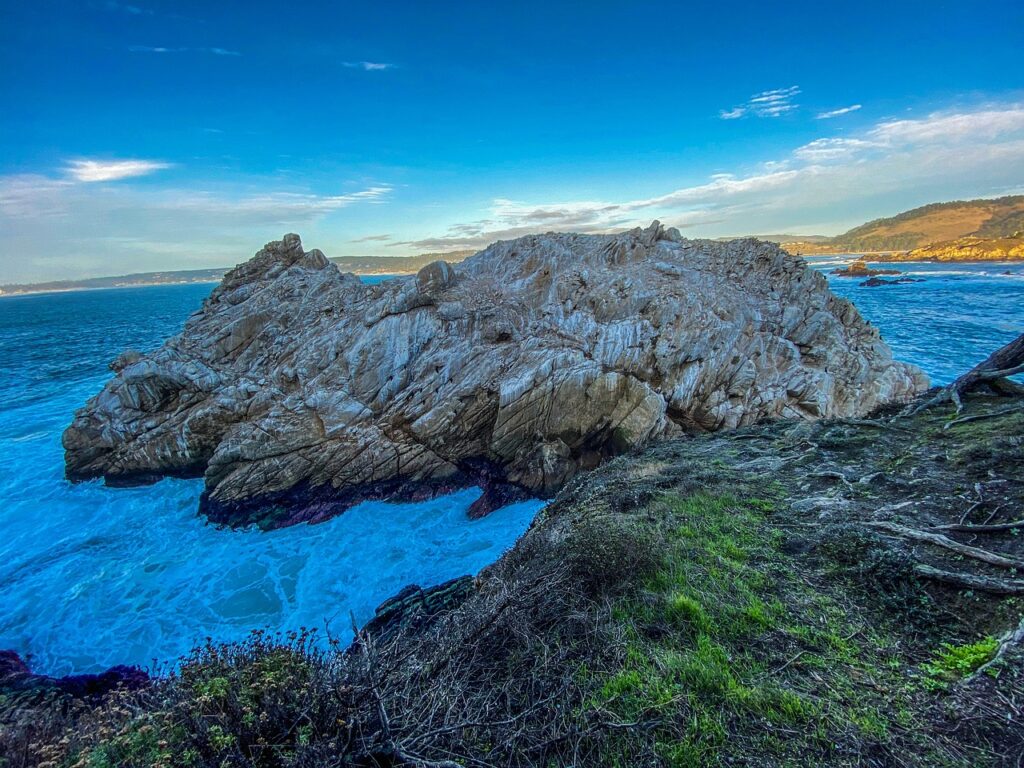Exploring the Hidden Gem of Reflection Canyon, Utah: A Solo Female Traveler’s Guide to Lake Powell’s Best Kept Secret
Reflection Canyon is one of Utah’s most breathtaking and secluded treasures, nestled within the Glen Canyon National Recreation Area. As a solo female traveler, the thought of embarking on this adventure might feel daunting, but with the right preparation, it can be an unforgettable experience. From the serene waters of Lake Powell to the rugged beauty of Reflection Canyon, this journey offers a blend of challenge and tranquility that’s perfect for those seeking a unique solo travel experience. In this guide, I’ll share my personal journey, recommendations, and everything you need to know to make your trip to Reflection Canyon safe and enjoyable.

- The Allure of Reflection Canyon: Why It’s Worth the Trek
- Planning Your Adventure: How to Get to Reflection Canyon
- Reaching Escalante, Utah: Your Gateway to Reflection Canyon
- Directions and Trailhead Information
- Preparing for the Hike
- Experiencing the Magic of Reflection Canyon: What to Expect
- The Best Time to Visit
- Camping at Reflection Canyon
- Staying Safe on the Trail: Essential Tips for Solo Female Travelers
- Where to Stay and Eat: Recommendations for Your Trip to Reflection Canyon
- Reflecting on the Journey: The Personal Rewards of Solo Travel to Reflection Canyon
- Sign up for the best travel tips and adventures!
The Allure of Reflection Canyon: Why It’s Worth the Trek
As someone who thrives on exploring off-the-beaten-path destinations, Reflection Canyon was an absolute must on my travel bucket list. This remote canyon offers a striking landscape where the water from Lake Powell carves through the colorful sandstone, creating a scene that looks like it’s been plucked straight from a painting. What drew me to Reflection Canyon wasn’t just its natural beauty, but the solitude it promises. Away from the crowded national parks, this canyon offers a rare chance to connect deeply with nature, providing the perfect setting for self-reflection and adventure.
The journey to Reflection Canyon is no walk in the park, but the reward at the end is nothing short of magical. The contrast of the turquoise waters against the fiery red rocks is a sight to behold, and as I stood there alone, I felt a profound sense of accomplishment. The effort required to reach this place only adds to its allure, making it a truly special destination for solo travelers looking for a memorable challenge.
Planning Your Adventure: How to Get to Reflection Canyon
Getting to Reflection Canyon is a journey in itself, and planning is key, especially for a solo traveler. The canyon is accessible via a strenuous 20-mile round trip hike from the closest trailhead, and this hike is not for the faint of heart. It’s important to be well-prepared for the journey both physically and mentally.
Reaching Escalante, Utah: Your Gateway to Reflection Canyon
The small town of Escalante, Utah, serves as the starting point for your adventure to Reflection Canyon. Located in the heart of the Grand Staircase-Escalante National Monument, this charming town is more than just a waypoint; it’s a hub for outdoor enthusiasts and a community that embraces the spirit of adventure. Getting to Escalante might require some extra planning, but the journey is well worth it for the experiences that await.
By Car: The Most Direct Route
Renting a car and driving to Escalante is the most common way to reach the town, and it offers the flexibility to explore the surrounding area at your own pace. The drive is scenic, passing through some of Utah’s most iconic landscapes, including red rock canyons, sprawling deserts, and lush forests. Here are the primary routes to consider, depending on your starting point:
- From Salt Lake City: If you’re coming from Salt Lake City, the state’s capital, the drive to Escalante is approximately 300 miles and takes around 5.5 hours. You’ll take I-15 South to UT-20 East, then merge onto US-89 South. From US-89, you’ll turn onto UT-12 East, which takes you directly to Escalante. UT-12 is known as one of the most scenic highways in the United States, so be prepared for some breathtaking views along the way.
- From Las Vegas: If you’re starting your journey in Las Vegas, the drive is about 320 miles and takes around 6 hours. You’ll take I-15 North out of Las Vegas, then turn onto UT-20 East. From there, merge onto US-89 South and finally take UT-12 East to Escalante. This route also takes you through beautiful desert landscapes, including parts of Zion National Park if you have time for a detour.
- From Phoenix: For those traveling from Phoenix, the drive to Escalante is approximately 450 miles and takes about 7.5 hours. You’ll take I-17 North out of Phoenix, then merge onto I-40 East. From I-40, take US-89 North, which will eventually lead you to UT-12 East and into Escalante. This route takes you through a mix of Arizona’s high desert and southern Utah’s striking red rock country.
By Air: The Closest Airports
If driving isn’t an option, flying into a nearby airport and renting a car is another viable way to reach Escalante. Here are the closest airports:
- Salt Lake City International Airport (SLC): Located about 300 miles north of Escalante, Salt Lake City International Airport is the closest major airport. From here, you can rent a car and drive the scenic route to Escalante. The drive takes you through diverse landscapes and offers opportunities for stops at national parks like Bryce Canyon and Capitol Reef.
- Las Vegas McCarran International Airport (LAS): Another option is to fly into Las Vegas, which is about 320 miles southwest of Escalante. While the drive is slightly longer, it offers the chance to explore other iconic destinations in southern Utah and northern Arizona, such as Zion National Park or the Grand Canyon’s North Rim.
- Page Municipal Airport (PGA): For a closer, regional option, consider flying into Page Municipal Airport in Arizona, which is about 115 miles from Escalante. However, flights to Page can be limited, and you’ll likely need to connect through Phoenix or Denver. The drive from Page to Escalante takes around 2.5 hours and offers views of Lake Powell and the Glen Canyon National Recreation Area.
By Bus: A More Budget-Friendly Option
For those traveling on a budget or without access to a car, taking a bus is another option. However, be aware that bus services to Escalante are limited and may require transfers:
- Greyhound or Amtrak: Greyhound and Amtrak offer bus and train services to nearby cities like Panguitch or Bryce Canyon City. From there, you can arrange for a local shuttle or taxi to take you the rest of the way to Escalante. This option may require more time and coordination, but it can be a cost-effective way to reach the town.
- Shuttle Services: Some local outfitters and shuttle services operate in the Escalante area, catering to hikers and outdoor enthusiasts. These services can provide transportation from nearby cities or airports directly to Escalante. It’s a good idea to book these in advance, especially during peak travel seasons.
Once You’re in Escalante
After reaching Escalante, you’ll find that the town itself is small and easy to navigate. The main road, UT-12, runs through the heart of the town, with most accommodations, restaurants, and stores located along this route. Escalante is also an excellent base for exploring other attractions in the region, including Calf Creek Falls, Hole-in-the-Rock Road, and the Devil’s Garden.
If you didn’t drive to Escalante, consider renting a vehicle locally if possible, especially if you plan to explore remote areas like Reflection Canyon. Some local outfitters may also offer guided tours or transportation to popular hiking trailheads if you prefer not to hike solo.
Reaching Escalante may take some effort, but it’s all part of the adventure. The town’s remote location ensures that it remains a hidden gem, offering unparalleled access to some of Utah’s most stunning and untouched natural wonders. Once you arrive, you’ll understand why Escalante is the perfect gateway to Reflection Canyon and the greater Glen Canyon National Recreation Area.
Directions and Trailhead Information
To begin your journey, you’ll need to reach the town of Escalante, Utah. Escalante serves as the gateway to the Grand Staircase-Escalante National Monument, and from here, you’ll drive towards the Glen Canyon National Recreation Area. The drive to the trailhead, known as the Forty Mile Ridge Trailhead, is an adventure in itself. The road is rough and can be challenging, especially after rain, so I highly recommend using a high-clearance 4WD vehicle.
Once you reach the trailhead, the hike to Reflection Canyon begins. There are no marked trails, so navigation skills are essential. I used a GPS device, which was incredibly helpful in staying on track. The hike is largely across open desert terrain, with minimal shade, so start early in the day to avoid the heat, and be sure to bring plenty of water – I carried at least 5 liters.
Read more: The Ultimate Guide to Exploring Mohegan Sun
Preparing for the Hike
The hike to Reflection Canyon is challenging, particularly if you’re going solo. The terrain is uneven, and the lack of a defined trail means you’ll need to navigate carefully. It’s essential to be self-sufficient, carrying all the water, food, and gear you’ll need for a full day’s trek. I also packed a first aid kit, a satellite phone for emergencies, and extra layers for the cool desert nights.
For solo travelers, I cannot stress enough the importance of letting someone know your plans before you head out. Leave your itinerary with a trusted friend or family member, and check in with them once you return. Safety is paramount, and being prepared can make all the difference.
Experiencing the Magic of Reflection Canyon: What to Expect
Reaching Reflection Canyon is a moment of pure joy and awe. The sight of the canyon with its curved, ribbon-like formations reflected in the still waters of Lake Powell is something that will stay with you forever. I arrived just as the sun was beginning to set, casting a golden glow over the canyon. The beauty of the place is otherworldly, and in that moment, I felt completely connected to the landscape around me.
The Best Time to Visit
Timing your visit to Reflection Canyon is crucial. The best time to go is during the spring or fall when the temperatures are more manageable. Summer can be brutally hot, and winter nights can be freezing, making the hike even more challenging. I chose to go in late April, which offered pleasant daytime temperatures and cooler nights.
Sunrise and sunset are the best times to experience the canyon, as the changing light creates a stunning array of colors on the canyon walls and water. If you’re up for it, I highly recommend camping overnight. Watching the stars appear in the clear desert sky, far from any light pollution, is a surreal experience that adds to the magic of the place.
Camping at Reflection Canyon
Camping at Reflection Canyon is an unforgettable experience. There are no designated campsites, so you’ll need to practice Leave No Trace principles, ensuring that the area remains pristine for future visitors. I found a spot with a clear view of the canyon and set up my tent just in time to catch the last rays of sunlight.
If you plan to camp, make sure you bring all necessary gear, including a sturdy tent, sleeping bag, and plenty of food. The wind can pick up at night, so securing your tent and belongings is important. I spent the evening sitting by the canyon’s edge, listening to the sounds of the desert and reflecting on my journey. It was a moment of solitude and peace that I’ll cherish forever.
Staying Safe on the Trail: Essential Tips for Solo Female Travelers
As a solo female traveler, safety is always a top priority. The remoteness of Reflection Canyon means that you’re unlikely to encounter many other hikers, which is both a blessing and a challenge. Here are some tips to ensure your adventure is both safe and enjoyable.
Trust Your Instincts
One of the most important pieces of advice I can give is to trust your instincts. If something doesn’t feel right, don’t hesitate to turn back or change your plans. The hike to Reflection Canyon is demanding, and it’s okay to adjust your pace or itinerary based on your comfort level.
Be Prepared
Preparation is key to a safe solo hike. This includes packing all necessary supplies, knowing how to navigate without marked trails, and understanding the risks associated with desert hiking. I also recommend carrying a personal safety device, such as pepper spray, and making sure your GPS or satellite phone is fully charged before you set out.
Stay Connected
Even though you’ll be in a remote area, it’s important to stay connected. As mentioned earlier, let someone know your plans, and check in with them when you can. I also carried a whistle and a small mirror for signaling in case of an emergency.
Respect the Environment
Finally, respecting the environment is crucial. Reflection Canyon is a fragile ecosystem, and it’s up to all of us to keep it beautiful. Practice Leave No Trace principles, and take all your trash with you when you leave. By doing so, you’ll help preserve this incredible place for future generations of travelers.
Read more: Acadia National Park in Maine: Things to Do and 4 Days Travel Itinerary
Where to Stay and Eat: Recommendations for Your Trip to Reflection Canyon
Reflection Canyon is a remote destination, and there are no nearby accommodations or restaurants. However, the town of Escalante and the surrounding area offer some great options for where to stay and eat before and after your hike.
Where to Stay
In Escalante, there are a few charming lodges and bed-and-breakfasts that cater to travelers. I stayed at the Escalante Outfitters, a cozy lodge that also offers cabins. The atmosphere is welcoming, and the staff is knowledgeable about the local area, providing helpful tips for my hike.
Where to Eat
Escalante has a few excellent dining options to satisfy your hunger after a long day on the trail. I highly recommend Escalante Outfitters Café, which serves delicious wood-fired pizzas and fresh salads. The café has a relaxed vibe, making it a great place to unwind and share your adventure stories with fellow travelers.
Another spot worth visiting is Nemo’s Drive-In, a local favorite known for its classic American diner fare. Their burgers and milkshakes are the perfect comfort food after a challenging hike. For breakfast, I loved Kiva Koffeehouse, located a short drive from Escalante. The café offers stunning views of the Escalante River and serves a fantastic selection of coffee, pastries, and breakfast dishes.
Read more: Discovering the Magic of Oval Beach, Michigan
Reflecting on the Journey: The Personal Rewards of Solo Travel to Reflection Canyon
Traveling solo to Reflection Canyon was more than just a physical journey; it was an experience that allowed me to push my limits, embrace solitude, and connect deeply with nature. The challenges of the hike and the remoteness of the canyon made the rewards even sweeter. As I stood on the edge of the canyon, watching the sun dip below the horizon, I felt a profound sense of accomplishment and peace.
For any solo female traveler considering this adventure, I encourage you to take the plunge. Reflection Canyon offers a unique opportunity to experience one of Utah’s most beautiful and secluded landscapes, all while embracing the freedom and empowerment that comes with solo travel. With careful planning and a spirit of adventure, your journey to Reflection Canyon will be one that you’ll remember for a lifetime.



